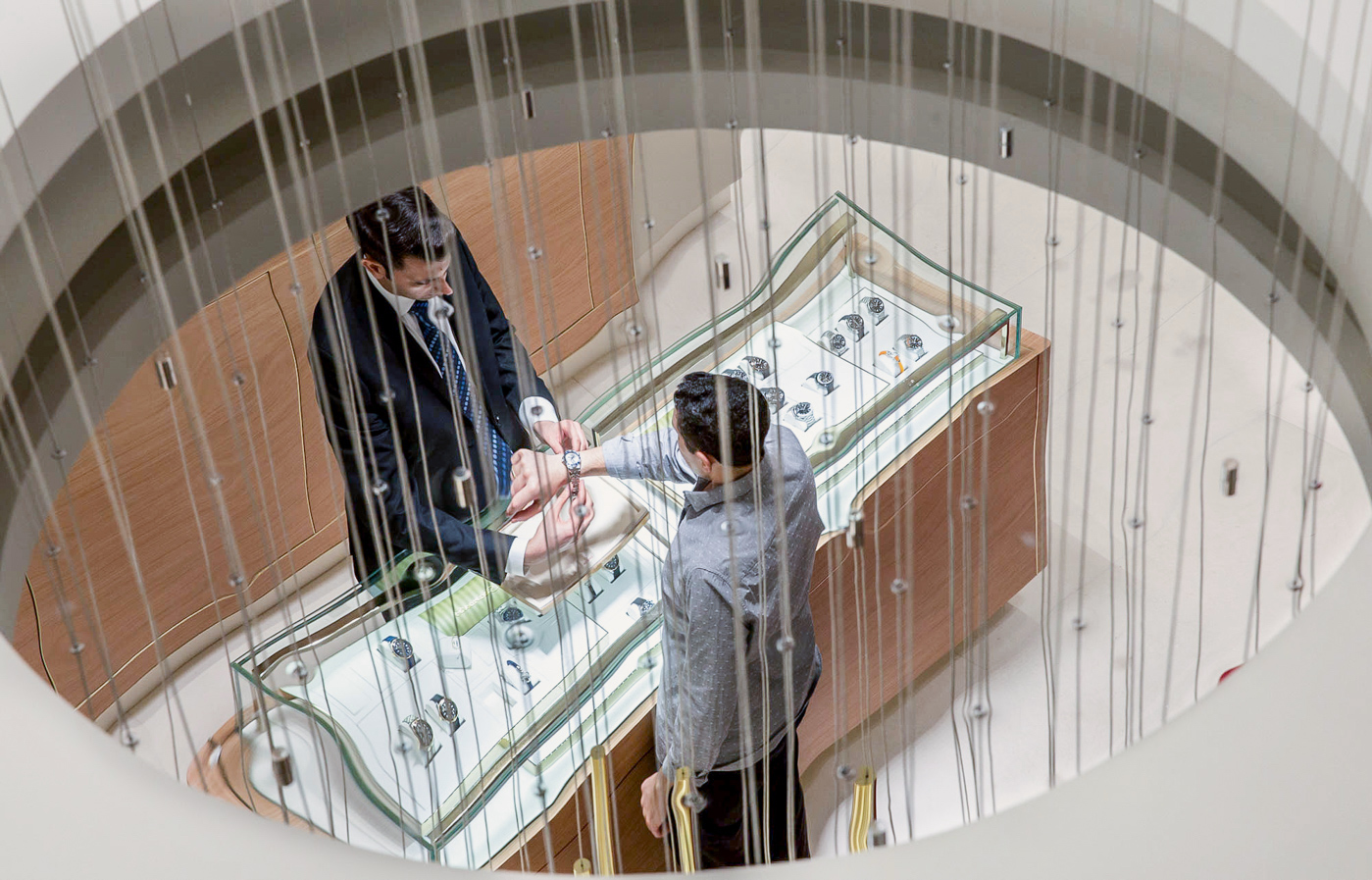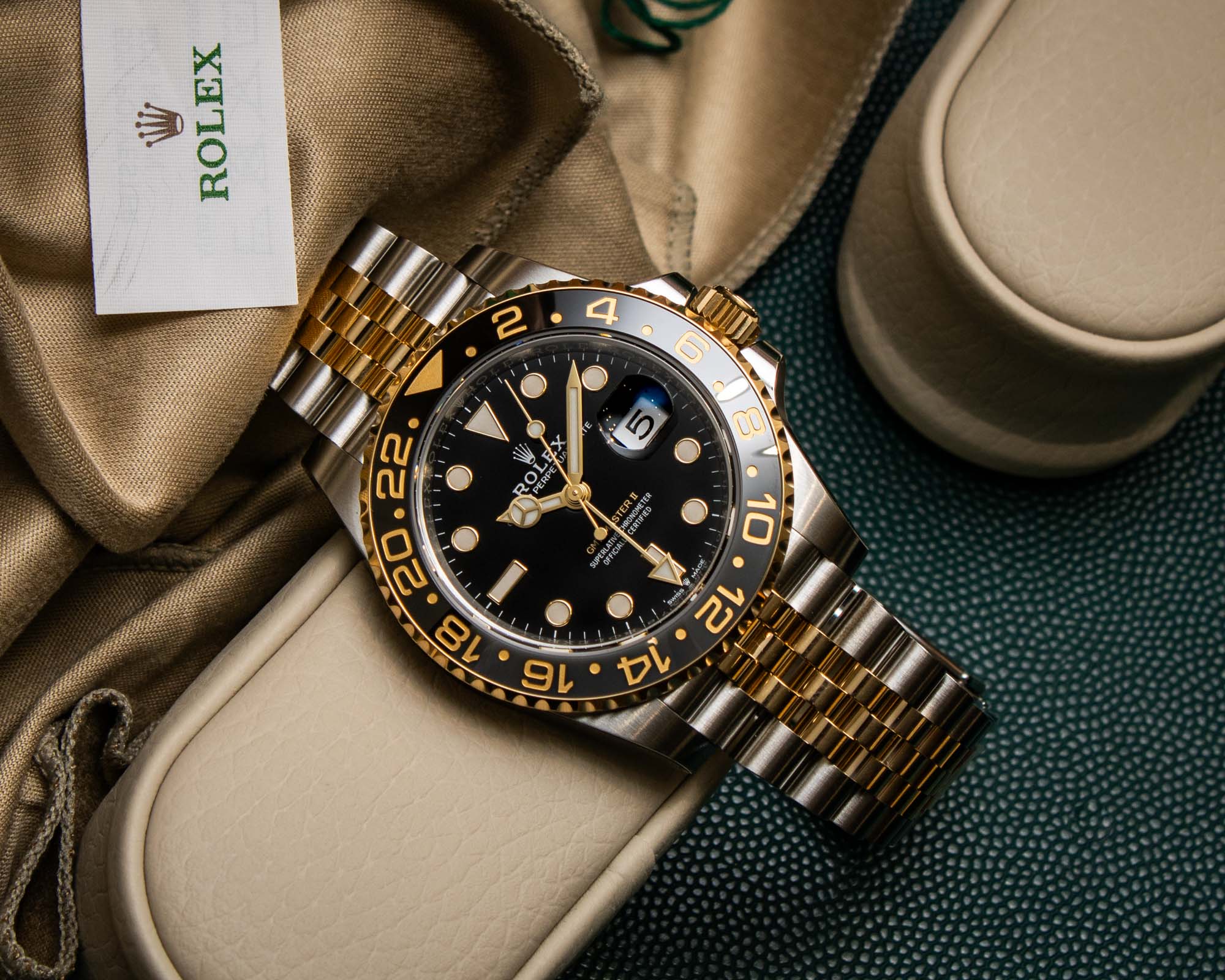
I want you to buy and enjoy watches as much as possible and I am a zealous advocate of doing so. aBlogtoWatch is a shrine for people who enjoy wearing and talking about timepieces. We have every incentive to promote this form of recreation and art appreciation. What we want to help avoid is the dissemination of ideas that result in people buying the wrong watches, in the wrong ways, and for the wrong reasons. What I want to prevent is people having bad experiences buying watches because I believe bad experiences prevent people from truly enjoying this enthusiastic pursuit and wonderfully social hobby. Between my professional and personal experience collecting and working with watches for more than 20 years, here are my insights about what to expect after buying a luxury timepiece.
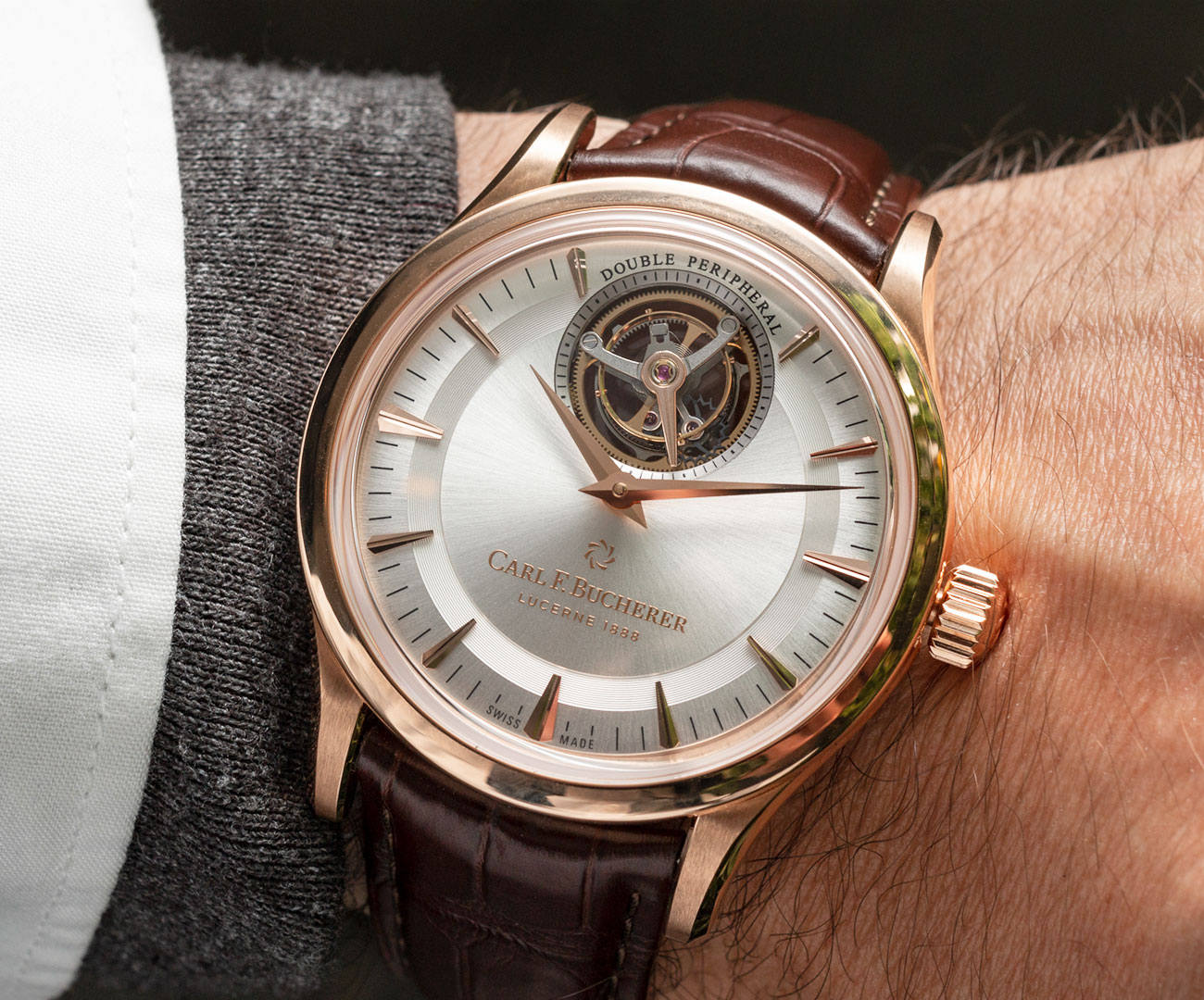
You’ll Fall More (Or Less) In Love
The reason there are so many watches out there is that no one can seem to agree on what makes a perfect timepiece. Tastes are just as varied as our anatomies and lifestyles, and finding a watch that works for you can be challenging. It can also require some trial and error before you know what you actually like. You might get curious over time and want to experiment with new looks and feelings. That’s why collecting watches is an ongoing process, as opposed to a singular mission to find one watch and then move on with your life. There is a reason many timepiece aficionados refer to this hobby as an “addiction” (but they do so with a smile).
As is common in life, we don’t always know how we will feel in the future or what we really think about something after spending only a little bit of time with it. There are so many questions we need to answer for ourselves. Is your interest in a particular wristwatch merely a temporary infatuation or is it an authentic long-term desire? Are you thinking about one watch when you really want another? What if you don’t like the size or comfort of a design that you otherwise visually admire. Maybe a watch you didn’t think was so great ends up being your perfect wrist companion after you spend time wearing it for a while. For a variety of reasons, even after you purchase a watch you initially like, you might end up liking it more, or perhaps less. That’s okay and it’s normal.
To help combat spending high-end money on temporary interests, I recommend that people wait a few weeks (or longer) before buying a particular product in which they’ve taken an interest. That burn-in period allows you to digest whether or not you truly want to wear something or if you simply have a fleeting interest in something new. This cannot always be done before you buy a watch and thus the process of determining how you feel about it can often happen after you buy it. Much of the time people are pleasantly surprised and a watch they moderately like ends up truly romancing them. That said, the same thing can happen in the other direction, and we can quickly become disenchanted with a new timepiece. Expect this to happen more than once during your watch-collecting journey. The good news is that the more watches you wear, the more you get to know your own tastes, and thus make fewer buying mistakes. In any event, be fully prepared to change or deepen how you feel about a watch after buying it.
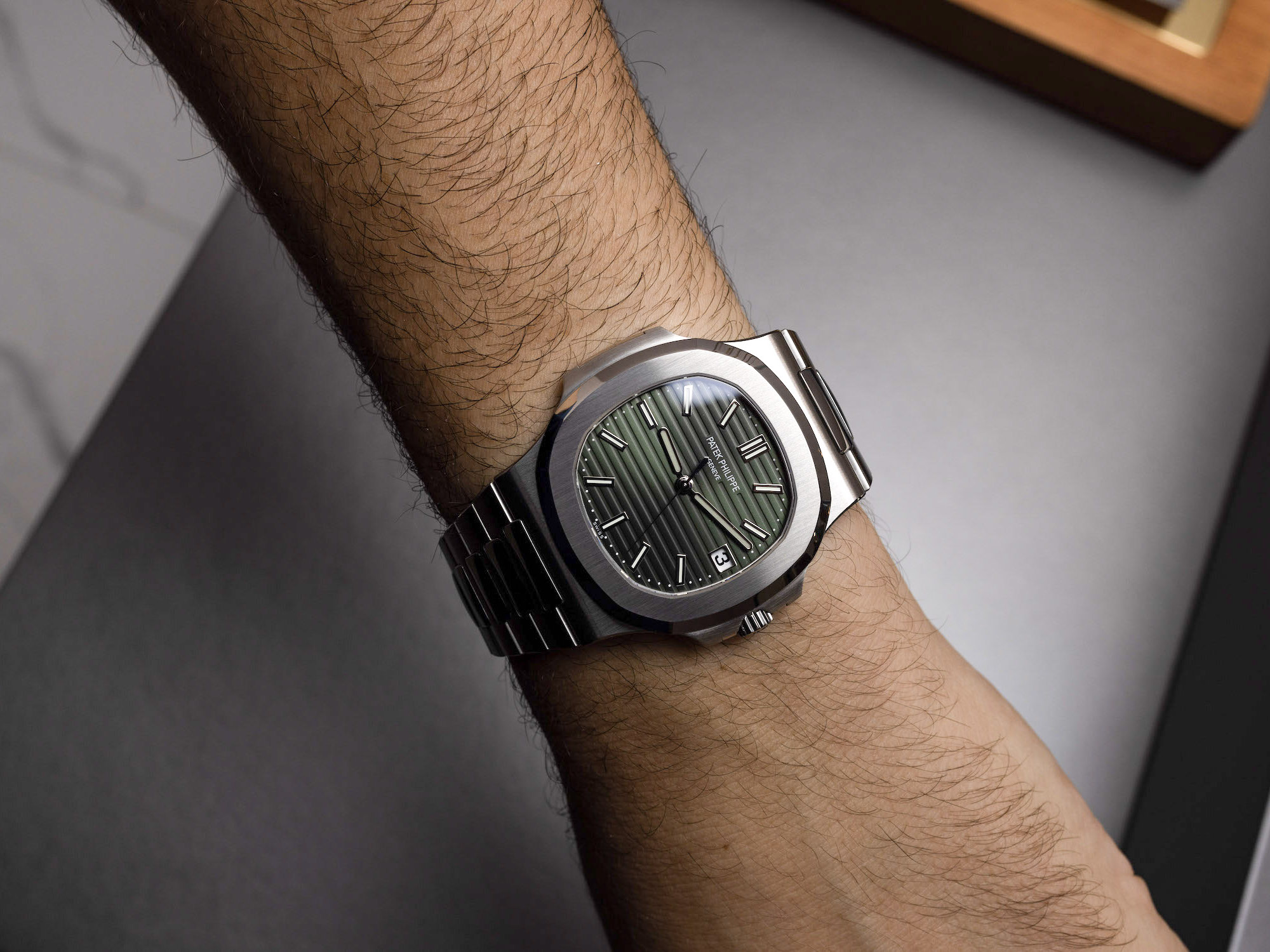
Don’t Expect Your Watch to Perform Like a Financial Investment
Historically, it was common sense to know this, but after a few years of “watches as investments” in the media, responsible professionals such as myself need to disclaim that watches hold value like most other luxury goods. That is to say, outside of relatively rare instances, you will lose money on a watch after buying it if you attempt to resell it. You buy watches to enjoy them and to reward yourself. They are “emotional investments” in yourself if anything. Watches should not be thought of as an asset that you purchase, hold on to for a while, and then sell to someone else for more money. The rule is that you should probably not purchase a watch if part of your motivation for doing so is to sell it again in the near future.
Most of the watches that will go up in value after being purchased are too difficult or expensive to buy in the first place for most to make a money-making scheme out of this scheme. Buying watches is like anything else, in that watches immediately depreciate after being purchased new. It is the same with clothing, cars, clothing, jewelry, and just about any other manufactured goods. Only things where uniqueness and scarcity are part of the selling point can anyone reasonably think about buying something brand new and then hoping that within their lifetimes it will appreciably go up in value. It is much wiser to understand that after you buy a watch, if you need to sell it, you will lose a good chunk of the value.
The major upside to this is that you as a consumer will benefit when you want to purchase a used watch. It isn’t very fun to collect timepieces when used ones cost more than new ones (or close to that) – and it also defies long-term market logic. We lose money selling pre-owned watches in exchange for being offered good deals when wanting to buy pre-owned watches. People should buy watches with the intention that they may never want to sell them. That implies never spending more disposable income than you have available when purchasing a watch in the first place. It is the core wisdom of the watch-collecting hobby to never purchase something you cannot immediately afford. Further, when you want to purchase someone’s used watch, you benefit from getting a lower price for a pre-owned product. Really, everyone wins. If you want to invest your money, there are other, probably better, ways of doing so.
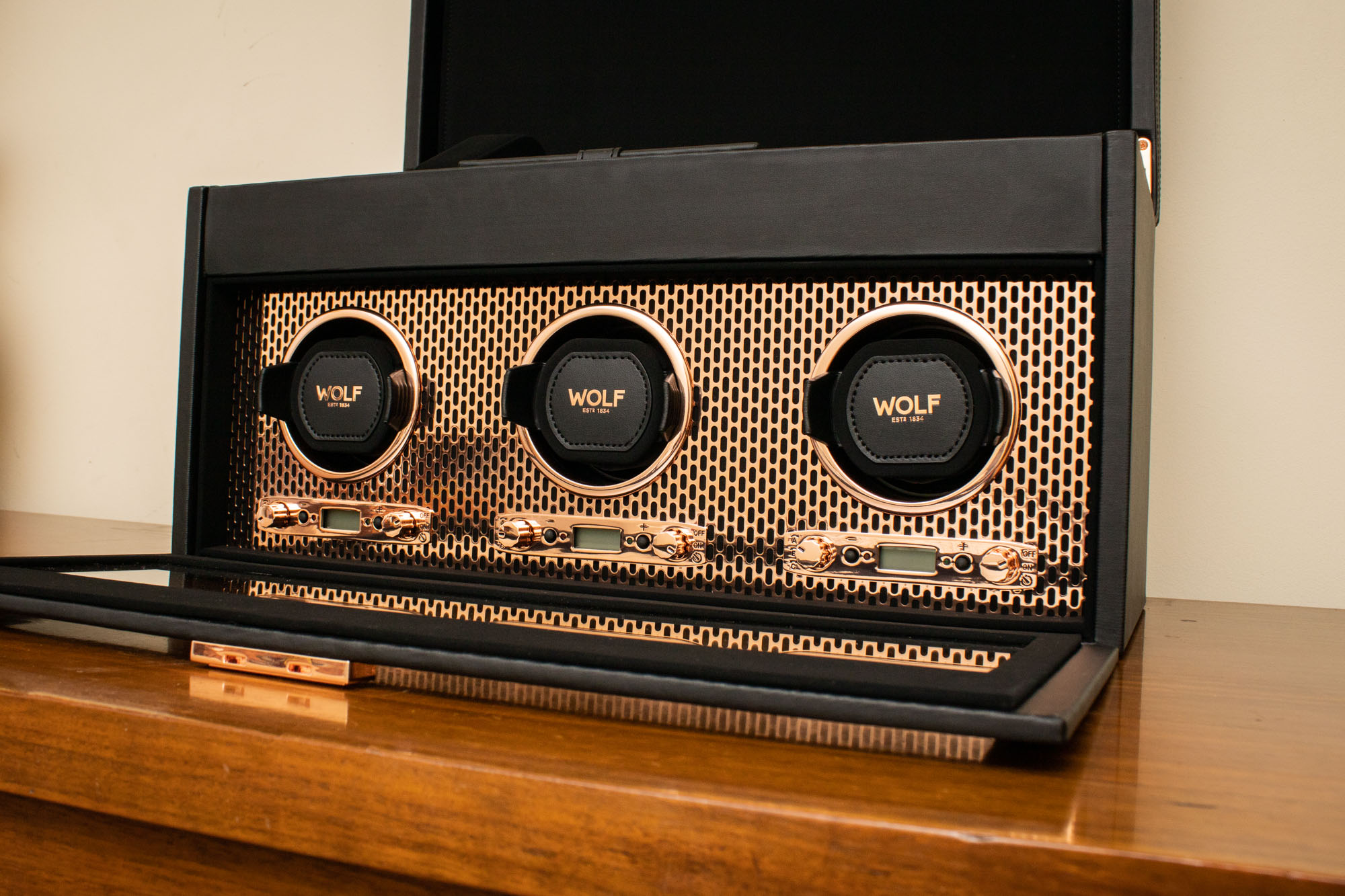
You’ll Need Safe Places to Store or Carry Them
The watch collecting industry comes complete with countless watch boxes, winders, safes, and storage containers. Since watch collecting is a practice of owning multiple items, most people end up wanting a place to store and organize them. Storage is also related to security. Watches are small items with a high value, and that means they are frequent targets for thieves. Many people lose watches not because they are targeted for a violent robbery, but because they leave their watch around out in the open in their home, office, gym, or hotel. Thus, storing your watches is as much about keeping them free from physical damage as it is about helping to prevent them from being stolen.
I cannot write a full guide to storing or carrying your watches in this article, but I hope to get you thinking about it. You’ll not only need ways of safely traveling with your watches but also convenient places to store them at your home. You may need more than one type of storage, as different watches have different needs. Some like to lay flat, and some need to be stored with a closed strap or bracelet as though they are on a wrist. Some watches might benefit from being on a winder, and some need to be left out so that their dials can be exposed to light to recharge batteries. Some watches you will want handy to grab and wear at a whim, and others you will want to store in a safe for only occasional viewing or wearing.
What all watches tend to have in common is the need to not be scratched or damaged while being stored or traveled with. Watches should never be stored right next to one another as metal-on-metal connections will cause scratches. Babying your watches by protecting the integrity of their surface polishes and finishes may help you extend the enjoyment value of wearing them. This is a lot easier if you have the right types of places and products to store and house your watches. You don’t need to spend a lot of money (but you certainly can), but invest some time and resources into getting proper storage and safety solutions for your timepieces.

Brands & Stores You Buy from Will Want to Get to Know You
A common reason why buyers stick with the same retailer or company is because of how doing business with that seller makes them feel. As I mentioned above, much of the time people buy watches to celebrate themselves whether that is a milestone in their life or just their own success. When rewarding themselves, customers like to feel powerful and privileged while they are actually doing the financial transaction, in addition to enjoying the item or experience they are paying for. Watch retailers are aware of this, and the best ones out there excel not only at their selection of products but in their ability to help a customers feel as good about themselves as possible.
These days, that relationship doesn’t end after you have purchased a single watch. Retailers or brands will want to keep a close relationship with their customers for a variety of reasons. Principal among them is the hope that customers will come back and buy more products. The treatment customers can receive as a result is typically very good, and can even result in lavish event or trip invitations, or other similar experiences. Brands selling the most high-end luxury goods know that spending some money on their customers is a very solid strategy to get their customers to spend again on them. If you are someone who can spend large amounts of money on watches, you can easily benefit from this by being invited to very exclusive events simply because a store knows you are one of their regular customers.
There are downsides to brands and retailers wanting to keep close connections with their buyers. Most people know what it is like to be on a marketing mailing list – lots of unsolicited messages and often irrelevant topics. In its worst forms, being in a watch brand’s customer database means you may get spammed with overwhelming commercial offers. Thankfully, most of the time these lists are easy to opt out of. More troubling are some retailers who seek to manipulate their clients. This behavior is often of limited harm, but customers should know that selling luxury goods can be an emotional push-pull game. It isn’t always the fact that watch sellers are genuinely helpful, friendly people. Some like to stoke insecurity or tell fictional tales about a watch or brand’s availability. Some of this can happen during the time of purchase, and other times it can happen over time as watch sellers reach out to existing customers to maintain lines of communication. As I said, for the most part, customers benefit from the fact that retailers and brands want to get to know them. Once in a while, however, customers themselves become the product and are subject to unfair and unwarranted manipulation tactics (or simply too many annoying e-mails) from a dealer.
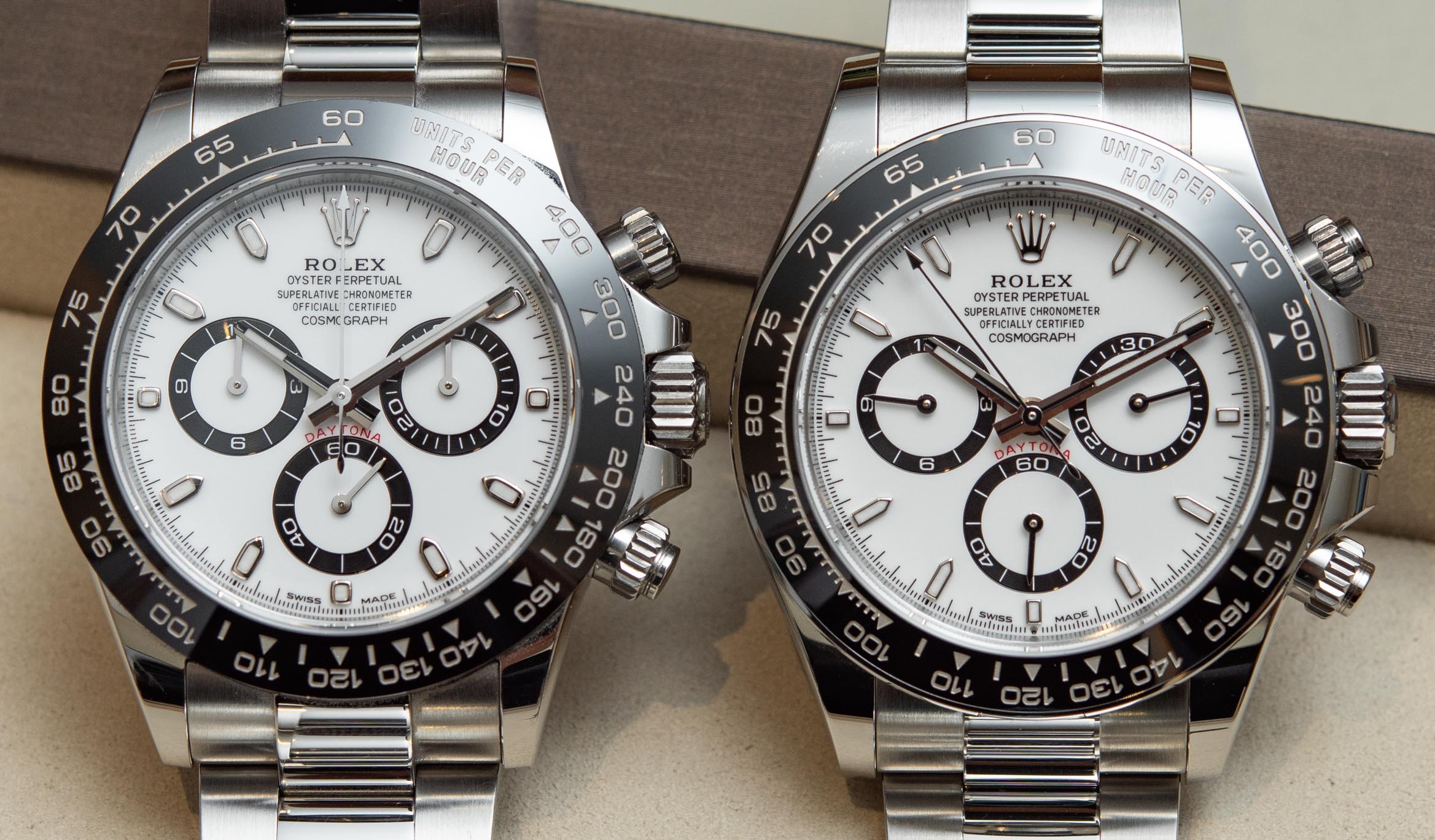
Trading It for Something Else Is Possible
If you get bored of a watch or end up not liking it, there are lots of options for you. Above, I mentioned that it is actually pretty common for people to change their minds about a product after first buying it. Also, it is perfectly reasonable for someone to get tired of the same watch design if they have been wearing it regularly for years on end. The emotion of wanting to let go of one watch so that your collection (or wrist) can accommodate another is very common.
While you won’t be able to sell your watch for profit, you should be able to make an existing watch turn into a new watch without too much effort. On one extreme you can sell an unwanted watch for cash, and then use that cash to purchase another watch. With that said, you can often simply trade a watch for another, just as you might trade in a used car when purchasing a new one. Not all watch retailers or brands accept trades. Sometimes the best trades will happen between close colleagues or trusted members of an enthusiast club. With that said, it is often advisable to trade a watch (perhaps supplemented with some cash) for a new watch, as opposed to first trying to sell the original watch for money, and then using that money to fund a different purchase.
My time being around watch collectors has led me to realize that the majority of the time, when an enthusiast wants to sell a watch it isn’t for the money, but rather to swap it out for a different piece to add to their collection. If your collection grows too large or you simply need to get rid of one watch before acquiring another, then trading watches is not a bad idea. With that said, anyone transacting with a more sophisticated party should always be aware of when they are at an information disadvantage. If you are a novice watch collector and you are attempting to trade a watch with an experienced dealer, you are probably going to be at a disadvantage. To combat this, do some research online regarding what your watch is selling for on the used market (don’t trust just one price but use the average of a sample group) to know what your bargaining power is. More so, do the same thing regarding the value of the watch you want. Usually, just being armed with a little bit of reliable (not all internet information is unfortunately) information can help you get the best deals when both buying and trading timepieces.

Other People Might Not Notice It and That’s Okay
I don’t know how many people experience this sensation, but I certainly did when I was just starting out to collect watches. The scenario was simple. I would spend weeks if not months lusting over a particular watch. I would read up on it, see that other people like me were equally enthusiastic online, and I would imagine how onlookers seeing it on my wrist in the real world might be likewise impressed with it and compliment the new watch when seeing it on my wrist. I didn’t want to make anyone jealous of course, but it was just a matter of liking the idea that someone is noticing a distinctive accessory you are wearing. Without at least some attention you feel like all your effort that went into choosing something personal, went to waste. Sorry, but much of the time the person most impressed with a watch is the person wearing it.
Early on I realized that most people didn’t pay close attention to watches, or if they do, they tend to keep their compliments to themselves. I have had people compliment watches, and it is a good feeling. But only highly secure and social people compliment others, let alone highly detailed and nuanced objects such as watches. More so, I could never actually predict what wristwatch would get attention or a compliment. Long ago I stopped expecting people to notice my watch and share my enthusiasm, but for a while, it was a real bummer that only I seemed to feel so passionate about these objects.
Today that experience is less common because watch lovers of all skill and experience levels have a variety of social groups they can belong to. Between in-person collector events to communities built around media companies like aBlogtoWatch (our podcasts are a good way to get to know us and join in with nerdy watch conversations), there are a lot of places you can go hear from other watch lovers or to simply feel noticed.
One of the primary reasons many people like collecting watches today is because of the social element. In fact, social watch collectors (people who do it primarily for friends and community) probably outnumber the object collectors (people who are more interested in the things — the watches in this case — than the people). No one interested in timepieces today seeking community should ever feel left out. Of course, there is no need at all to participate in a watch collector group or conversation to enjoy buying and wearing watches, but for a lot of people, it creates a much deeper and more meaningful hobby and recreational pursuit.
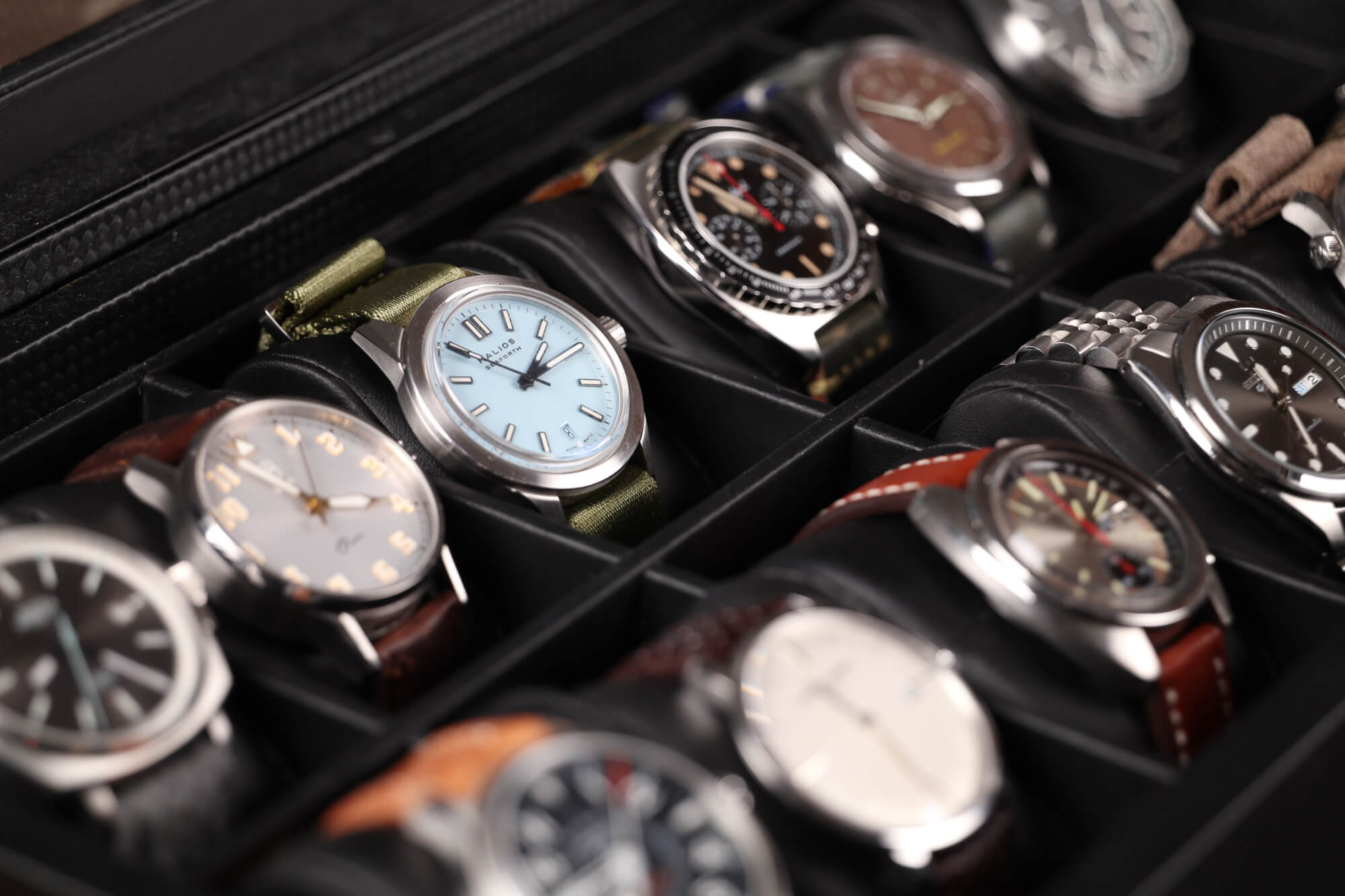
It Will Inspire You to Collect More Watches
One watch will probably lead to another. I don’t know of anyone interested in timepieces who feels “done” after buying just one. There is a popular concept in the watch collecting universe of the “grail watch.” The idea originally meant someone’s ultimate watch acquisition. Meaning one watch that would satisfy all their needs and that couldn’t be topped. The grail watch concept has evolved since then. Today people have long lists of grail watches. Collectors of fine timepieces today must navigate having a desire for both actual products they might be able to own, and legendary or ultra-expensive treasures that they fantasize about and will probably never even see let alone keep. This hobby simply isn’t the same if you don’t have grail watches and you only yearn for items you can readily buy or afford.
How to build a watch collection is not a complicated topic, but there is also a lot of bad advice out there. Unfortunately, there are a lot of lists and guides online that purport to tell people shortcuts on how to build a collection. I would ignore any recommendation lists of watches to collect or people who spend too much time on identifying the perfect watches for your collection. As I said above, because people wear watches based on their personal tastes, you can’t have cookie-cutter collections. Would you rather wear a watch you chose yourself or one that someone else said that you should like? Most people would probably opt to choose for themselves, especially since they are the ones who have to look at it on their wrist. My advice is to always make a personal decision about what next watch to acquire and thus wear. Only personal choices end up being both satisfying and lasting.
There are so many types of watches out there, at all price levels, that collecting timepieces is a hobby that doesn’t end. Between watches that already exist and those that will be released during the lifetime of your hobby, you will have far more watches available than you will ever be able to buy. No one — not even the world’s wealthiest watch collectors — can buy everything they like. Being into watches means that you slowly go from one acquisition to another, biding your time until something cool becomes available, and learning more about the hobby in the times between purchases.
The most organic and satisfying way to collect watches is simply to go from one purchase to another. I would not recommend spending any time planning out future purchases or strategizing about having a watch to wear for every occasion. Not only is doing so impractical, but it goes against the spontaneity of forming relationships with watches. I’ve referred to timepieces as “vessels for emotions.” We ascribe to them personal feelings based on when we got them, why we wear them, or the life experiences that occur while they are on our wrists. None of that can be planned out or anticipated. Collecting watches is akin to collecting small trophies during your life. The best focus is on how to earn those trophies as opposed to where you will store them once you receive them. This is why I recommend a slow and organic process for building a watch collection. Feel no pressure to own anything in particular, and at the same time, be open-minded to owning anything in particular. Happy watch collecting ….

